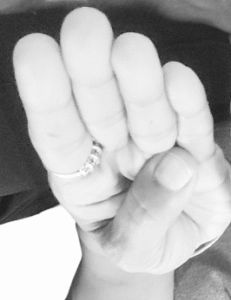Jala Surabhi Mudra
Introduction
Jala Surabhi Mudra is a hand gesture in yoga that harmonizes the water element (Jala) within the body, promoting fluid balance, calmness, and detoxification. The term “Jala” means water, and “Surabhi” is associated with purity and fragrance, symbolizing clarity and vitality. This mudra is primarily used to regulate hydration, improve kidney and urinary system function, and enhance emotional balance.
Meaning
Jala (Water): Represents fluidity, emotions, and adaptability.
Surabhi (Fragrance/Purity): Symbolizes clarity and vitality.
Mudra (Gesture): Hand positioning that directs energy toward specific physiological or energetic effects.
Jala Surabhi Mudra is believed to balance the water element in the body, which can influence fluid metabolism, emotional stability, and overall wellness.
How to Perform (Method of Practice)
Step-by-Step:
Sit comfortably in Sukhasana (Easy Pose), Padmasana (Lotus Pose), or on a chair with a straight spine.
Rest your hands on your thighs or knees, palms facing upward.
Mudra is formed by touching the tips of the thumbs to the base of the small fingers while performing surabhi mudra.
Close your eyes, breathe naturally, and focus on fluidity and calmness within your body.
Practice Tip: Perform gently without straining fingers. Visualize the water element flowing and cleansing your system.
Benefits
Physical Benefits:
Supports kidney and urinary system health.
Helps regulate body fluids and hydration.
May aid in detoxification and water metabolism.
Mental & Emotional Benefits:
Reduces stress, tension, and emotional turbulence.
Enhances mental clarity and adaptability.
Spiritual Benefits:
Promotes inner calm and emotional purification.
Supports meditative focus and energy balance in the Swadhisthana (water) chakra.
Contraindications
Avoid if you have severe finger or hand joint issues.
Individuals with serious kidney or urinary disorders should practice under guidance.
Do not overstrain fingers; maintain comfort.
Anatomy & Physiology
Musculoskeletal: Activates intrinsic muscles of the hand, flexor and extensor coordination.
Urinary & Excretory: Supports parasympathetic regulation of kidneys and bladder.
Circulatory: Enhances blood flow to fingers and hand.
Neurological: Stimulates sensory nerve endings, improving proprioception and mind-body awareness.
Kinesiology
Involves fine motor coordination of fingers.
Gentle stretching and alignment improve joint mobility in the phalanges.
Provides neuromuscular feedback, promoting hand stability and energy awareness.
Neurology
Stimulates somatosensory cortex areas corresponding to fingers.
Activates parasympathetic nervous system, promoting relaxation.
Enhances focus and meditative awareness through tactile feedback and visualization.
Duration of Practice
Beginners: 5–10 minutes per session.
Advanced: 15–20 minutes, once or twice daily.
Can be combined with pranayama techniques like Nadi Shodhana (alternate nostril breathing) for enhanced water element balance.
Counter Mudra
Prithvi Mudra (ring finger and thumb tip together) or Varuna Mudra can be alternated.
Switching helps balance earth and water elements, maintaining overall elemental harmony.
Conclusion
Jala Surabhi Mudra is a subtle yet effective mudra for balancing the water element, calming emotions, and supporting kidney/urinary health. Regular practice helps maintain fluid balance, emotional stability, and inner serenity, making it a valuable addition to daily yoga or meditation practices.
FAQ
Q1: Can Jala Surabhi Mudra be done while lying down?
Yes, though sitting with a straight spine enhances energy flow.
Q2: How frequently should it be practiced?
Once or twice daily, preferably during meditation or quiet moments.
Q3: Can children practice it?
Yes, under supervision and for shorter durations.
Q4: Does it replace medical treatment for kidney issues?
No, it complements but does not replace conventional medical care.
Q5: How soon will benefits be felt?
Mental calmness can appear within a few sessions; physical benefits may take weeks of consistent practice.
References
Swami Satyananda Saraswati. Mudras for Healing and Transformation. Yoga Publications Trust.
Dr. Bharati Krishna Tirtha. Science of Mudras.
T.K.V. Desikachar. The Heart of Yoga: Developing a Personal Practice.
Yoga Journal articles on mudra therapy.
Clinical studies on mudras and parasympathetic nervous system activation.

